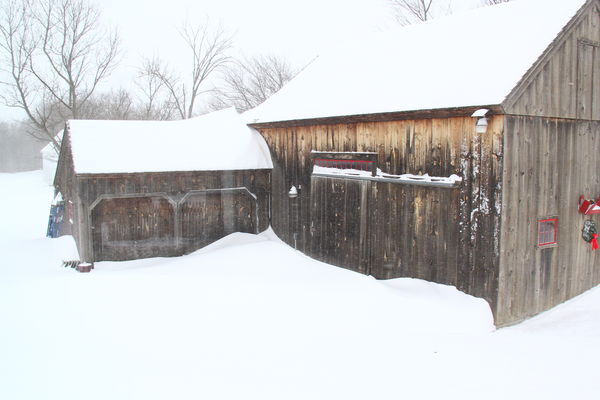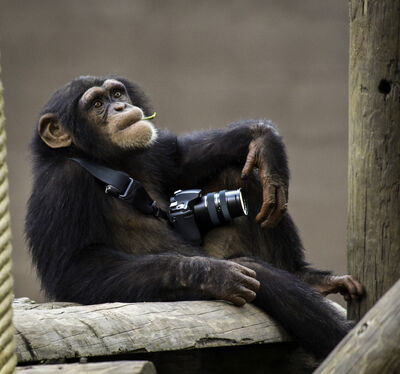Snow Photography
Dec 15, 2015 11:44:03 #
I'm visiting friends who live in a remote area where there is lots of snow. I've been taking a lot of photos during my walks in the snow and was reminded all over again how frustrating it's been in the past getting good snow photos. I've got just a couple of days left before I head back to civilization. I'm wondering if anyone has some quick suggestions on dealing with snow. I've dealt with white balance issues and much of the basic stuff but the dynamic range is tough, I'm discovering. I've been shooting in jpg/RAW and know I can combine photos but I'm trying to cut down on computer time as my friends want some quick photos...and I'm picky...probably too picky about the photos I give people. I'd like to get it "right" in the camera with no PP necessary. Any quick advice for snow photos? I am using a Canon Mark II (my Mark III was stolen recently and I've not replaced it yet). Thanks....
Dec 15, 2015 11:58:33 #
If you are typical, you are underexposing. If you let the camera meter the scene you need to increase the exposure at least 2 - 2 1/2 stops.
Use daylight wb and shoot raw.
Use daylight wb and shoot raw.
Dec 15, 2015 11:59:37 #
Have you tried overexposing by about 1.5-2 EP? The white snow will fool your camera's metering system. Also you might try spot metering on something in the frame that has a neutral tone. WB should probably be set to sunny or cloudy depending on what the weather is giving you. Adjust from these basic settings as needed for proper exposure and WB.
Dec 15, 2015 12:07:48 #
Canonman333 wrote:
I'm visiting friends who live in a remote area whe... (show quote)
Here is the best suggestion you will get and it will save you from messing with anything like this in the future.
Buy yourself and inexpensive incident meter, use it to set your camera's manual exposure, and shoot.
Sekonic L308. Even a used one from Ebay.
You won't have anymore issues with exposure no matter what the conditions. Snow....ice, backlight, sunset....
Buy it and use it.
Yes, you can "guess" your way to an exposure (notice the suggestions so far? "2-2 1/2 stops" and "1- 1.5 stops"?)but you won't learn what you need to learn while doing that and you will be slower than just popping a reading and taking shots.
And yes, I will get "poo poo'd " because this is overkill and we don't need incident meters anymore because our camera's meters are so good...I know.
Another huge difference is this; if you use an incident meter, no matter what your camera dial tells you about the exposure, you can happily ignore it unless it suddenly gets cloudy or sunny or whatever; i.e. if the conditions change significantly.
shoot shoot shoot and never worry.
Dec 15, 2015 12:23:34 #
rpavich wrote:
Here is the best suggestion you will get and it wi... (show quote)
AGREED - One thousand per cent.
:thumbup: :thumbup:
Dec 15, 2015 12:23:41 #
Canonman333 wrote:
I'm visiting friends who live in a remote area whe... (show quote)
As meters read every thing as neutral grey (18%) meter off a grey card If you don't have one you can print your own. Google 18%grey and print it. often the palm of your hand is close to 18% grey, so you can metr off your palm. Short of that- as above overexpose- first by 1 stop and chimp. If not good go to 2 stops and check Hope this helps. This scene is 2 stops overexposed. I don't post it because the photo is a prize winner( it is most certainly not) but only to show 1 1/2 stop overexposure
Last years snow

Dec 15, 2015 12:30:44 #
Canonman333 wrote:
I'm visiting friends who live in a remote area whe... (show quote)
My simple method
Use your exposure compensation setting.
If the snow covers 50% or more of the viewfinder, open up 1 to 1.5 (1.7 stops) by exposure compensation.
If the snow scene covers considerably more than say 60-90% of the viewfinder, open up 2 stops.
Always works for me... Makes the snow white.
Remember that the meter in attempting to render the snow as the meter should... stops down and meters the snow neutral grey, so if you only rely on the meter... you get grey snow.
You, being in charge have to over ride the meter with your compensation and open up the stops that caused the snow to go grey. On a large field of snow it takes 1 to 2 stops to override the snow, rendering it white.
That's my 95% solution. The only thing that the exposure compensation button does is open up and close down stops from proper metering depending on the compensation from neutral grey that the meter imposes on all subjecs.
When I am in an area of snow, I simply set the compensation amount as i described and let the meter do it's thing and the compensation button do it's thing.
Likewise when you are in darker subject matter (not dark light, but dark subjects) the meter tries to bring dark objects to neutral grey by opening up stops too much. Your job is to stop down requisite stops to make the dark objects dark or compensate from the meter making them grey back to making them dark.
I have a simple mnemonic I ALWAY use that works for me.
"If the subject field is too light/bright by view, always STOP UP 1-2 stops!
If the subject field/dark objects are very dark by view, always STOP DOWN 1-2 stops with exposure compensation"
That second line will turn your greyed out dark object to proper dark grey objects.
Now this works if you are shooting the camera on automatic which is the way I always shoot such scenes.
Now I fully know how to meter and set the camera manually, but tricky snow scenes, (or scenes over water), I am able to hand better by shooting on auto and then just use compensation.
I don't think, as many do, that it impunes my "manhood" in any way by occasionally using the camera on AUTO.
The objective is to get the picture.... not to stand around fiddling with the meter and the manual settings on a scene God created to EFF with my mind
:!: :!:
Dec 15, 2015 12:33:56 #
Quick and easy , try dialing in some extra exposure on the compensation dial, then bracket 2/3 or 1 stop, if you have to you can do HDR, Bob.
Dec 15, 2015 12:34:58 #
Dec 15, 2015 12:49:21 #
Kuzano wrote:
The objective is to get the picture.... not to stand around fiddling with the meter and the manual settings on a scene God created to EFF with my mind
:!: :!:
The objective is to get the picture.... not to stand around fiddling with the meter and the manual settings on a scene God created to EFF with my mind
:!: :!:
Lol..no impugning your manhood, but using an incident meter is the very definition of easy and not fiddling.
I don't wait until I'm at the scene to set the camera...I set it the minute I walk outside.
Then when I see something, I pull the trigger. As long as the sun doesn't suddenly go away or it clouds up like a rainy day...no reason to even think about it.
No fiddling, no messing around. Just shooting.
It's the essence of easy no fiddle shooting.
Just thought I'd clarify that in case anyone else was under that misunderstanding about manual/meter shooting.
Dec 15, 2015 13:02:34 #
rpavich wrote:
Here is the best suggestion you will get and it wi... (show quote)
Thank you. I'll do some related research.
Dec 15, 2015 13:08:27 #
Kuzano wrote:
My simple method br br Use your exposure compensa... (show quote)
I'll give this a try as it's a quick fix to my problem. I think the issue for me arose as I have conditioned myself not to use auto. That option is there for a reason and at times I need to use it. I've been overexposing by 1 to 2 stops but that doesn't seem to really do the trick. At least not always. Dynamic range is also an issue but I'm not sure how to effectively deal with it aside from postprocessing and shooting RAW. If I get the subject properly exposed, the snow is often blown out. Will give your suggestion to try today. Thanks.
Dec 15, 2015 13:22:50 #
Canonman333 wrote:
Thank you. I'll do some related research.
PM if you have specific questions.
Dec 15, 2015 13:26:40 #
Canonman333 wrote:
... If I get the subject properly exposed, the snow is often blown out.
Only if the subject isn't in the same light as the snow.
If the subject and the snow are in the same light then one cannot blow out without the other. Your camera is getting fooled by reflectivity.
Thus is the beauty of using an incident meter, as long as the light doesn't change it makes no difference if you were pointing the camera at a deer, or a tree, or snow, the exposure will be spot on
Dec 15, 2015 13:38:07 #
rpavich wrote:
Only if the subject isn't in the same light as the snow.
If the subject and the snow are in the same light then one cannot blow out without the other. Your camera is getting fooled by reflectivity.
Thus is the beauty of using an incident meter, as long as the light doesn't change it makes no difference if you were pointing the camera at a deer, or a tree, or snow, the exposure will be spot on
If the subject and the snow are in the same light then one cannot blow out without the other. Your camera is getting fooled by reflectivity.
Thus is the beauty of using an incident meter, as long as the light doesn't change it makes no difference if you were pointing the camera at a deer, or a tree, or snow, the exposure will be spot on
I generally don't have trouble shooting snow but I just got a light meter that has incident, reflective and flash metering.
My main purpose for buying was for multiple flash applications.
Haven't used it outdoors but am looking forward to it.
If you want to reply, then register here. Registration is free and your account is created instantly, so you can post right away.







